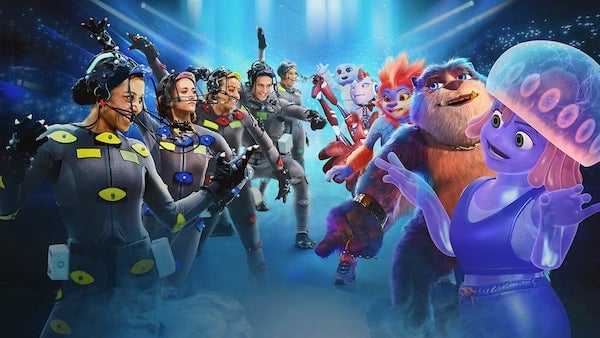How do you run a tight team on a 2,200-shot epic when separated by time zones and a global pandemic? We spoke with Walt Jones, one of the three founders of Rhythm & Hues Malaysia descendant, Tau Films, to find out.
Remote production of visual effects is more common than ever. As technology continues to bridge the physical gap between creatives, studios are more willing to expand operations worldwide.
Tau Films (formerly Rhythm & Hues Malaysia) is one such studio. Co-founded by John Hughes, Mandeep Singh, and Walt Jones in 2014, Tau runs a core creative and supervisory team in Los Angeles/North America and a global production team working in Kuala Lumpur, Hyderabad, Mumbai, Vancouver, and Beijing.
We spoke with Walt, Tau Film’s VFX Supervisor, about managing these remote teams, working across boundaries and cultures, and navigating the impact of COVID-19 while working on the Chinese Netflix feature film, The Yin Yang Master.
Please tell us a little about The Yin Yang Master and the work delivered by Tau Films.
The Yin Yang Master is a reimagining of the popular Onmyoji mobile game developed by NetEase Games. The film is currently available on Netflix and combines elements of fantasy, action, and adventure in an epic battle to save both the human and demon worlds from destruction. Fans of the game will recognize much from Onmyoji, but we’ve taken the film into new places beyond the initial audience.
By any measure, everything about this film is big; the scope of work covered the whole gamut, from CG characters to environments and FX. Eight vendors handled The Yin Yang Master‘s visual effects, comprising 2,200 total VFX shots and 90% screen time. Tau was one of two primary studios, the other being WYSIWYG Studios.
The Yin Yang Master features 53 unique CG characters; 20 have significant roles. Only one character had spoken dialogue, which was a challenge. However, nearly every character recreated relied on the nuances of facial performance to convey emotion, create empathy, and carry the story forward. We had some shots where a single look from a CG character had to say everything about what was happening in the moment.
Can you discuss the setup of Tau and other facilities working on The Yin Yang Master?
Work on The Yin Yang Master straddled Tau’s facilities in Kuala Lumpur, Hyderabad, and Los Angeles. Tau’s Beijing facility was the primary interface with the director, Li Weiran, and the film’s production team, and a large group of Tau artists also contributed remotely. In addition, seven external visual effects studios—operating out of China, Japan, Thailand, and South Korea—also contributed to over 1,800 shots that had to cut together with Tau’s work. So a lot of people were involved!
As you might imagine, managing The Yin Yang Master‘s workload over so many studios was a significant undertaking. We achieved it using a single, central tracking interface through which we could track who was working on what, how that work was progressing, what each studio’s target dates and work dependencies were, and what versions were available of the work created. In addition, we shared asset work across all studios so different teams could use work produced by another facility.
The production team in Beijing managed and coordinated the work, but we relied on regular communication between all the visual effects studios involved. We depended on instant messaging, video calls, email communication, and cineSync.
How has cineSync helped to reinforce and streamline such distributed workflows?
cineSync was critical to our process on The Yin Yang Master. Production on this scale would not be possible without cineSync, given the spread of people across multiple countries and continents.
All reviews and creative discussions ran through cineSync. Tau Animation Director, CJ Sarachene, ran most reviews from Los Angeles, with the director joining from Beijing. A typical director review session would see at least five countries connect via cineSync. Personally speaking, I’m on cineSync regardless of where I am, be it Beijing, Los Angeles, or Seoul.
cineSync’s best feature remains its synchronization of playback and the ability to send real-time sketches across continents. We also use the color correction tools to explore adjustments on concept art and shot composites, view mini-cuts via the sequence feature almost on the fly, and push all of our notes right back to our production tracking platform for immediate sharing with the entire team. cineSync’s production tracking integrations are game-changers for remote review.
cineSync’s color correction tools in action.
A distributed team must present other challenges, like working across time zones?
The challenges are numerous. Tau alone has more than 150 artists spread across three continents. (And in the case of The Yin Yang Master, artists on five continents.) We have a lot of time zones to work with!
The key to making everything work is coordination and communication. Everyone must know what needs to be done, when, and where to find feedback when elements need a tweak. Work within the pipeline can completely stall out if we don’t tackle things correctly. Keep iteration loops as tight as possible is critical; doing so ensures that artists aren’t waiting for work from other artists, the render farm, or supervisors. Discussing this whole process could fill at least a couple of interviews and whitepapers, if I’m honest!
In the context of production on The Yin Yang Master, nearly all work funneled through CJ, myself, and one of the assistant directors focused on visual effects. We strove to understand the challenges of each team, bundled work as much as possible, and presented things to the director and production team with consistency. We always endeavoured to get all teams pulled into reviews to collaborate with the director to receive unfiltered feedback first-hand.
Does working across different cultures present communication challenges?
As so much of what we do is highly subjective, we leave plenty of room for interpretation, even when everyone speaks the same language. Given that some concepts simply don’t exist in different cultures or translate differently, we spend a lot of time educating one another. Sometimes, it’s as simple as discussing the difference between something “slimy” and something “sticky”—on The Yin Yang Master we discovered that these concepts translate to approximately the same idea in Chinese.
How to get around such issues? You have to understand it isn’t about forcing your way of working on everyone else; it’s about finding common ground and building something new from there. Try to understand each individual’s unique perspective. Take all of their experience and knowledge and figure out a way to bring everyone together to get things done. You will need to be flexible and continually adjust as you proceed; it’s always a work in progress. The main thing is to have an open mind and dedicate yourself to the cause of working together to overcome challenges, no matter what.
When working with our diverse cultural team on The Yin Yang Master, we always provided clear, visual reference, as everybody understands an image. Another critical component was discussion; we spent much more time talking about our motivations for doing things a certain way on The Yin Yang Master than on many other projects. We didn’t tell artists to “make something bluer”; we’d go back to the story and the characters and discuss why the creative choice was important for the film. The “why” was just as important as the direction; it helped cross otherwise challenging communicative barriers.
However, I would like to clarify that whatever challenges an international team introduces, such a team will also bring enormous benefits to production. The Yin Yang Master is a truly worldwide collaboration: every artist brings their voice to the table. Those unique viewpoints have fed into something with a universal language.
I give a lot of credit to our director Li Weiran for this. Weiran has seemingly unlimited patience and energy to explore ideas and provide everyone with an opportunity to engage in the process. No idea is too big or too small to consider. The Yin Yang Master has been one of the most collaborative projects on which I’ve had the pleasure to work, and that’s thanks largely to Weiran.
How did COVID-19 and lockdown impact on Tau Films?
The visual effects industry was more prepared for remote work than any other part of the film pipeline. Visual effects studios have performed cross-location production for some time, with projects straddling continents and time zones. Tau Films is an anomaly in visual effects as we worked towards remote production from our foundation. As a result, we could quickly react and weather the storm.
I’m aware this isn’t the case for all studios. Getting the visual effects industry as a whole to function at full capacity through remote work will require extensive retooling of pipelines and workflows. Still, I hope the COVID-19 situation opened eyes to the opportunities remote work offers. Setting up and running a remote studio at the efficiencies required for large-scale production is a challenge, but removing geographic and temporal constraints means you can bring on artists at any time and anywhere. You can work in a highly flexible way.
Remote work possesses the potential to revolutionize what visual effects are capable of, the speed at which creatives can create, and the flexibility of the whole process, even if achieved only within isolated parts of the pipeline. Therefore, the studios that can embrace a distributed, remote model should make it a part of the fabric of how they handle production.
Do you have any other tips about working remotely in visual effects?
I could write a whole book on this subject—it’s tough to distil my thoughts down to a few tips, but here we go.
The key to remote VFX work comes down to communication and follow-through. A virtually scattered team means no way to pull people together, confirm that everyone is physically present, or ensure everyone knows the current project status. How to solve this? In the six-plus years since we launched Tau Films, I’ve discovered that everyone needs to be ridiculously proactive in asking questions, clarifying questions, and understanding expectations. Doing so is a necessity for every role and discipline.
Production managers must check in with every artist multiple times a day, ask questions, ensure artists are on task, and progress toward common goals. Artists must regularly check in with leads, supervisors, and production managers/coordinators to not only ask questions but to update on what they’re doing, how they’re doing it, and when the next iteration will be ready. Leads and supervisors should check in with everyone to ensure they know and understand the creative and technical targets, the deadlines, and when to expect the next presentation. Communication. Communication. Communication.
When your team is remote, so much information can slip through the gaps. If you’re to avoid information loss, everyone has to micromanage everyone else, both downstream and up the chain of command. Doing so takes a lot of work, and some people take constant communication the wrong way, but it’s the only method to ensure teams move in unison toward the right targets.
The right software can facilitate the above but cannot replace proactive communication. Production tracking, dailies, notes, and schedules should exist on a single online platform like ftrack Studio. Centralizing these production processes ensures the most up-to-date project information is transparent and available to all team members at the same time.
You must also be able to run real-time reviews with teams and individuals using tools like ftrack Review, Zoom, and cineSync, the latter of which integrates fantastically with ftrack Studio to keep the latest production information in sync.
With the above in place, artists can focus on creating images rather than managing data from wherever they happen to work.
Connect teams with ftrack
Collaborate and connect regardless of where your teams are based. Learn how ftrack can help.

More from the blog
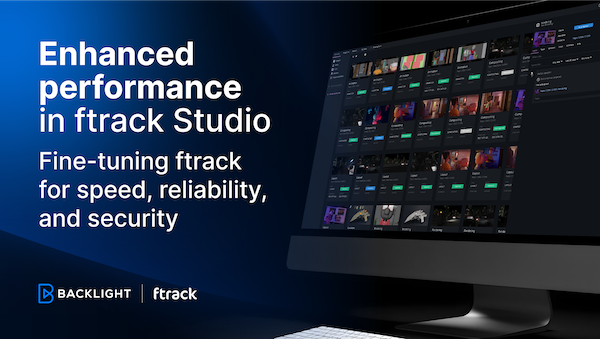
Enhanced performance in ftrack Studio: Fine-tuning for speed, reliability, and security
Chris McMahon | API, Developer, New features, Product, Productivity, Studio | No Comments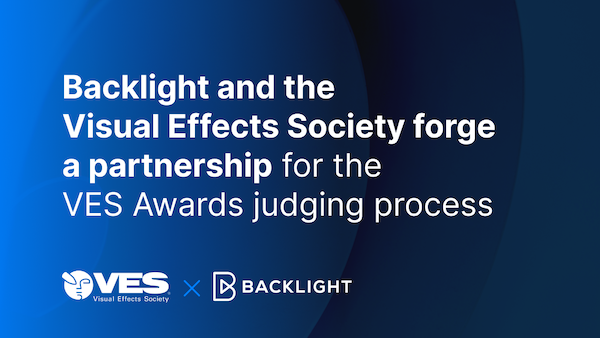
Backlight and the Visual Effects Society forge a partnership for the VES Awards judging process
Kelly Messori | Case Study | No Comments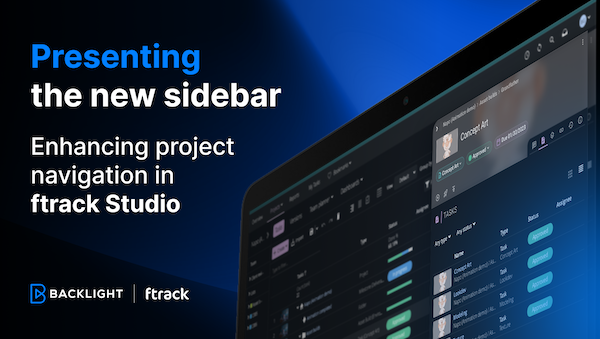
Presenting the new sidebar: Enhancing project navigation in ftrack Studio
Chris McMahon | New features, Product, Release, Studio | No Comments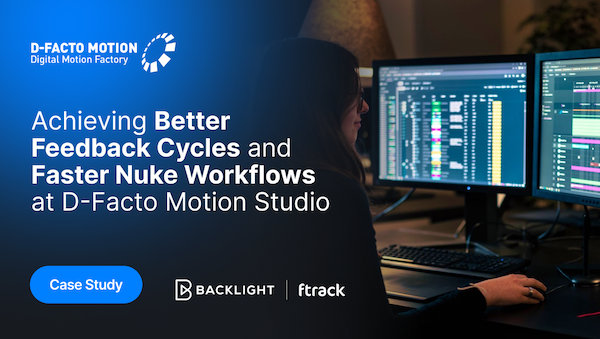
Achieving Better Feedback Cycles and Faster Nuke Workflows at D-Facto Motion Studio
Kelly Messori | Case Study, Studio | No Comments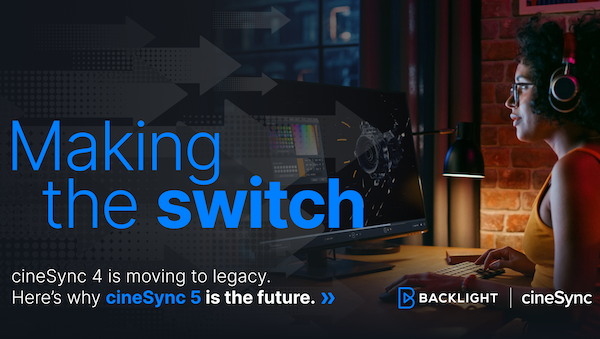
Making the switch: The transition to cineSync 5
Mahey | Announcements, cineSync, News, Product | No Comments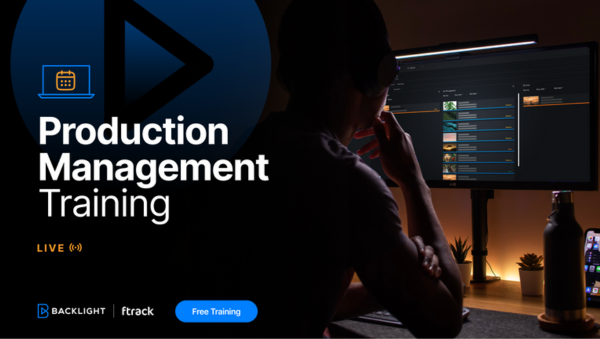
Supporting Your Studio: Free ftrack Studio Training and Office Hours from Backlight
Kelly Messori | News | No Comments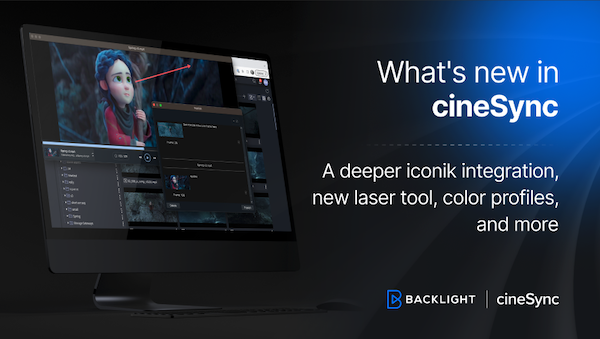
What’s new in cineSync – a deeper iconik integration, laser tool, OTIOZ support, and more
Chris McMahon | cineSync, New features, Product, Release | No Comments